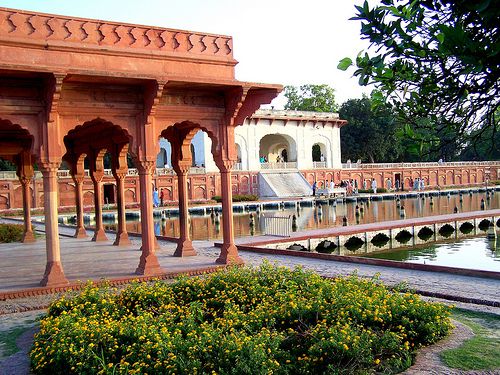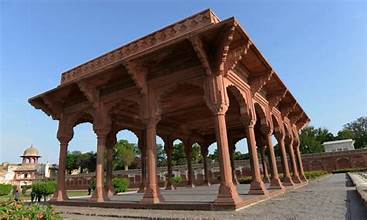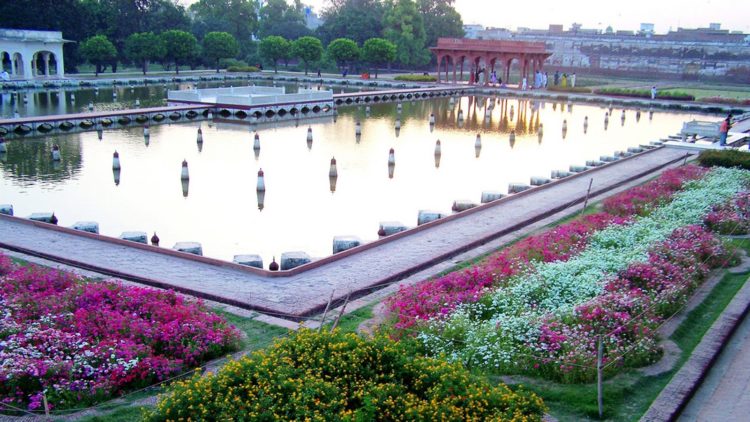Article
Shalimar Gardens
Published
1 year agoon
By
EDITOR
Quick Facts
| Location Coordinates Category Starting Date Completation Date Order to Construct Architecture Style Covered area Status Endangered Site | Lahore,Pakistan 31°35’13.32N 74°22’56.04E Garden 1641 A.D. (1051 A.H.) 1642 A.D. (1052 A.H.) Shah Jahan Persian gardens Style 658m north to south and 258m east to west UNESCO World Heritage Site,From 1981 In 2000 |
The Shalimar Gardens, also spelled Shalamar Gardens, represent a remarkable Persian-style garden, a testament to the garden design traditions. Commissioned and constructed by the Mughal Emperor Shah Jahan in Lahore, Pakistan, these gardens are a testament to the era’s architectural brilliance.
Situated near Baghbanpura along the Grand Trunk Road, approximately 5 kilometers northeast of Lahore’s main city, the Shalimar Gardens draw inspiration from five distinct geographical sources: Central Asia, Kashmir, West Punjab, Persia, and the Delhi Sultanate. Notably, these gardens should not be confused with the Shalimar Gardens in Jammu and Kashmir.
In 1981, the UNESCO World Heritage Site list welcomed the Shalimar Gardens, alongside the Lahore Fort, as part of the UNESCO Convention safeguarding global cultural and natural heritage sites.
Historical Roots:
Originally belonging to the esteemed Zaildar families of the region, particularly renowned as the Mian Family of Baghbanpura, the Shalimar Gardens’ site held significance. The Mian Family received the royal title of ‘Mian’ from the Mughal Emperor, honoring their services to the Empire. Mian Muhammad Yusuf, then the family head, generously donated the Ishaq Pura site to Emperor Shah Jahan after persistent requests from royal engineers, impressed by its favorable location and soil quality. In gratitude, Shah Jahan granted the Mian family governance of the Shalimar Gardens, a custodianship that endured for over 350 years.
Construction and Development:
Initiated in 1641 A.D. (1051 AH) under the auspices of Shah Jahan, the construction of the Shalimar Gardens reached completion within the following year. Supervised by Khalilullah Khan, a notable figure in Shah Jahan’s court, the project’s management involved collaboration with Ali Mardan Khan and Mulla Alaul Maulk Tuni.
Architecture:
The Shalimar Gardens are laid out in the form of an oblong parallelogram, surrounded by a high brick wall, which is famous for its intricate fretwork. This garden was made on the concept of Char Bhagh. The gardens measure 658 meters north to south and 258 meters east to west.
The three level terraces of the Gardens:
The Gardens have been laid out from south to north in three descending terraces, which are elevated by 4–5 metres (13-15 feet) above one another. The three terraces have names in Urdu as follows:
The upper terrace named Farah Baksh meaning Bestower of Pleasure.
The middle terrace named Faiz Baksh meaning Bestower of Goodness.
The lower terrace named Hayat Baksh meaning Bestower of life.
Shah Nahar:
To irrigate the Gardens, a canal named Shah Nahar meaning Royal canal, later also known as Hansti nahar, meaning Laughing canal was brought from Rajpot (Present day Madhpur in India), a distance of over 161 kilometers. The canal intersected the Gardens and discharged into a large marble basin in the middle terrace.
410 Fountains:
From this basin, and from the canal, rise 410 fountains, which discharge into wide marble pools. The surrounding area is rendered cooler by the flowing of the fountains, which is a particular relief for visitors during Lahore’s blistering summers, with temperature sometimes exceeding 120 degrees fahrenheit. The distribution of the fountains is as follows:
The upper level terrace has 105 fountains.
The middle level terrace has 152 fountains.
The lower level terrace has 153 fountains.
All combined, the Gardens therefore have 410 fountains.The Gardens have 5 water cascades including the great marble cascade and Sawan Bhadoon.
Buildings of the Gardens
The buildings of the Gardens include:
Sawan Bhadum pavilions.
Naqar Khana and its buildings.
Khwabgah or Sleeping chambers.
Hammam or Royal bath.
The Aiwan or Grand hall.
Aramgah or Resting place.
Khawabgah of Begum Sahib or Dream place of the emperor’s wife.
Baradaries or summer pavilions to enjoy the coolness created by the Gardens’ fountains.
Diwan-e-Khas-o-Aam or Hall of special & ordinary audience with the emperorTwo gateways and minarets in the corners of the Gardens
Trees of the Gardens:
Some of the varieties of trees that were planted included:
Almond
Apple
Apricot
Cherry
Gokcha
Mango
Mulberry
Peach
Plum
Poplar
Quince Seedless
Sapling of Cypress
Shrubs
Sour & sweet oranges
Design:
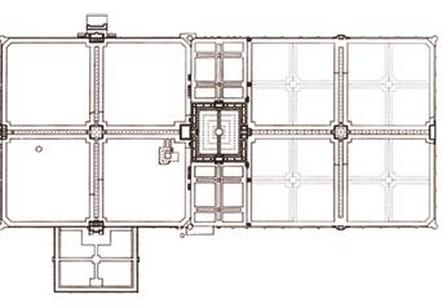
The enclosure is over 457 meters (500 yards) long, and contains 2 gardens, with a narrow rectangular terrace in between them. Each garden is divided by canals and flowerbeds, following the Persian tradition of the charbagh, or fourfold garden. Each of the 3 parts is on a different level, so that the upper parts are concealed from the view of people entering from below. The highest, and therefore the most private, section is thought to have been used by the imperial women. The channels of water that weave through the whole garden are fed by canals designed and administered by a defector from the Persian court, Ali Mardan Khan, or Inayat Khan, known for his architectural and building expertise. The gardens contain white marble buildings in typical Shah Jahani style. They are enclosed by a red sandstone wall interrupted by small decorative kiosks. The Shalimar Gardens are among the best preserved Mughal gardens.
You may like
-
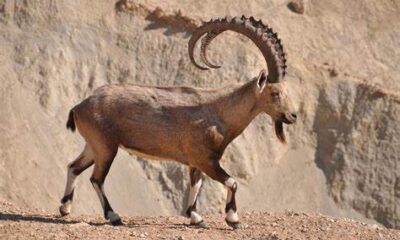

The Chiltan Ibex: A Rare Treasure of Balochistan
-


MANGO HEALTH BENEFITS NUTRITION
-


“Rising above the rugged terrain of Balochistan, Koh-i-Chiltan stands as a symbol of mystery and resilience.”
-


Aik Qaum, Aik Sath | Pakistan Zindabad | Pakistan Day Song | 23rd March 2024 | AIKQAUM.COM
-


Nation celebrates Pakistan Day today with traditional zeal
-


Pakistan Day: A Reminiscence of the Heroic Struggle of Muslims of the Subcontinent
Article
The Chiltan Ibex: A Rare Treasure of Balochistan
Published
1 month agoon
April 16, 2025By
EDITOR
The Chiltan ibex (Capra aegagrus chiltanensis), a subspecies of the wild goat, is one of the most unique and endangered animals native to Pakistan. Found exclusively in the rocky highlands of the Chiltan range within the Hazarganji-Chiltan National Park in Balochistan, this elusive animal represents the region’s rich biodiversity and ecological heritage.
Physical Characteristics
The Chiltan ibex is a strikingly beautiful species, with a robust, muscular build perfectly suited for navigating steep and rocky terrains. Males are particularly distinctive, boasting impressive curved horns that can grow up to 30 inches (76 cm) in length. Their coat is light brown, with a darker stripe running along their back and legs, providing excellent camouflage in their arid mountainous habitat.
Females are smaller in size with shorter, more slender horns, and their coloration is less pronounced, blending seamlessly into their surroundings. This camouflage helps protect them and their offspring from predators such as wolves and large birds of prey.
Habitat and Range
The Chiltan ibex inhabits the rugged, semi-arid regions of the Chiltan range, located within the Hazarganji-Chiltan National Park, southwest of Quetta. These high-altitude areas, ranging from 1,500 to 3,200 meters above sea level, are characterized by rocky cliffs, sparse vegetation, and extreme weather conditions.
The ibex is well-adapted to this challenging environment, where it feeds on grasses, shrubs, and the leaves of juniper trees. Its ability to climb steep slopes and jump across narrow ledges gives it a unique advantage in escaping predators and surviving in such inhospitable terrain.
Behavior and Social Structure
Chiltan ibexes are diurnal, meaning they are active during the day. They are typically found in small groups, with herds consisting of females and their young. Males are more solitary, joining herds only during the breeding season, which occurs in the late autumn and winter months.
During this time, males engage in dramatic displays of strength to compete for mating rights, including horn clashing and dominance rituals. After a gestation period of around six months, females give birth to one or two kids in spring, when food availability is higher.
Conservation Status
The Chiltan ibex is classified as endangered due to its restricted range, habitat loss, and poaching. Habitat degradation caused by overgrazing, deforestation, and human encroachment poses significant threats to its survival.
Historically, the ibex faced heavy hunting pressure for its horns, considered a symbol of prestige, and for its meat. Although hunting is now banned in the national park, illegal poaching remains a concern.
Conservation Efforts
To protect the Chiltan ibex and its fragile ecosystem, the Hazarganji-Chiltan National Park was established in 1980. Spanning over 32,500 acres, the park provides a safe haven for the ibex and other wildlife, such as wolves, foxes, and birds of prey.
Conservation efforts include:
- Anti-Poaching Measures: Increased patrolling and strict enforcement of hunting bans have helped reduce poaching incidents.
- Habitat Restoration: Programs to control overgrazing and reforest juniper woodlands are underway to restore the ibex’s natural habitat.
- Public Awareness Campaigns: Local communities are being educated about the importance of biodiversity and the role of the Chiltan ibex in maintaining ecological balance.
- Eco-Tourism Initiatives: Promoting responsible tourism generates revenue for conservation projects and raises awareness about the ibex’s plight.
Ecological Importance
The Chiltan ibex plays a vital role in its ecosystem as both a grazer and prey species. By feeding on shrubs and grasses, it helps maintain vegetation balance, preventing overgrowth and contributing to soil health. At the same time, it serves as a food source for predators, sustaining the natural food chain.
Protecting the ibex is not just about saving a single species—it’s about preserving an entire ecosystem that supports numerous forms of life, from tiny insects to apex predators.
Cultural Significance
For the people of Balochistan, the Chiltan ibex is more than just a wild animal; it is a symbol of the region’s natural beauty and resilience. Local folklore often intertwines with the ibex, celebrating its agility and strength. The species also draws international attention, making it a flagship for wildlife conservation in Pakistan.
The Future of the Chiltan Ibex
While conservation efforts have shown promise, the Chiltan ibex remains vulnerable. Protecting this rare species requires continued collaboration between government agencies, conservation organizations, and local communities.
By safeguarding the Chiltan ibex, we not only preserve a unique animal but also protect the fragile ecosystem of Balochistan, ensuring that future generations can marvel at the beauty and resilience of this incredible species.
The Chiltan ibex is a testament to nature’s ability to adapt and survive in the harshest of environments. As efforts to protect it continue, this majestic animal stands as a beacon of hope for wildlife conservation in Pakistan.
Article
“Rising above the rugged terrain of Balochistan, Koh-i-Chiltan stands as a symbol of mystery and resilience.”
Published
1 month agoon
April 16, 2025By
EDITOR
Koh-i-Chiltan, located in the rugged terrain of Balochistan, Pakistan, is not just a striking natural feature but also a site steeped in folklore, mysticism, and ecological significance. Rising to a height of approximately 3,194 meters (10,479 feet), it is the third-highest peak in the Chiltan range, forming part of the Sulaiman Mountain system. The mountain holds a commanding presence in the landscape and attracts mountaineers, nature lovers, and those intrigued by its legends.
Geography and Location
Koh-i-Chiltan is situated within the Hazarganji-Chiltan National Park, about 20 kilometers southwest of Quetta, the provincial capital of Balochistan. The name “Koh-i-Chiltan” translates to “The Mountain of Forty Spirits,” derived from local folklore that has become intertwined with its identity.
The surrounding park, spread across 32,500 acres, is a semi-arid region characterized by rugged cliffs, deep ravines, and sparse vegetation. The area is home to a diverse ecosystem, ranging from juniper forests to an array of fauna, including the Chiltan markhor, a rare wild goat species named after the mountain.
The Legend of the Forty Spirits
The legend of Koh-i-Chiltan is one of the most captivating tales of the region. According to local folklore, the mountain is haunted by the spirits of forty abandoned children. The story goes that a couple, unable to have children, sought help from a mystic who blessed them with forty babies. Overwhelmed by the burden of raising so many children, the couple is said to have abandoned them on the mountain.
The children, according to the legend, were nurtured by the mountain itself and eventually transformed into spirits. Locals believe these spirits still guard the mountain, and stories abound of mysterious voices, sightings, and unexplainable phenomena experienced by those who venture into the area.
This haunting narrative has contributed to the mountain’s mystique, drawing spiritual seekers and adventurers alike to experience its enigmatic aura.
Ecological Importance
Koh-i-Chiltan is not just a place of legends but also a significant ecological zone. The mountain and its surrounding national park serve as a critical habitat for the endangered Chiltan markhor, which is endemic to the region. Efforts to conserve this species have made the mountain a focal point for environmentalists and wildlife researchers.
The park also hosts other wildlife, including wolves, hyenas, foxes, and various bird species, making it a biodiversity hotspot. The juniper forests in the region are among the oldest in the world, some dating back several thousand years, and play a vital role in maintaining the ecological balance of the arid environment.
Tourism and Adventure
Koh-i-Chiltan is a growing destination for eco-tourism and adventure enthusiasts. Trekkers and climbers are drawn to the mountain’s challenging trails, which offer panoramic views of the surrounding landscapes. The Hazarganji-Chiltan National Park provides additional opportunities for hiking, wildlife observation, and photography.
Visitors to the mountain often report an eerie silence and a sense of being watched, experiences that only add to the allure of exploring Koh-i-Chiltan. Those interested in local culture and history will find the legends and traditions associated with the mountain as compelling as its natural beauty.
Cultural Significance
For the people of Balochistan, Koh-i-Chiltan holds cultural and spiritual importance. The mountain is a symbol of resilience and mystery, reflecting the character of the region itself. Local festivals and storytelling often feature the legend of the forty spirits, preserving the mountain’s legacy in the collective memory of the community.
Challenges and Conservation Efforts
Despite its significance, Koh-i-Chiltan faces challenges such as deforestation, overgrazing, and climate change. Conservation efforts, led by both government and non-governmental organizations, aim to protect the mountain’s delicate ecosystem. Initiatives include reforestation programs, wildlife monitoring, and community engagement to promote sustainable tourism.
Article
Aik Qaum: The Fusion of Integrity and Patriotism
Published
2 months agoon
March 19, 2025By
EDITOR
We keep Integrity closest to our Heart and Patriotism on top of our mind.
Integrity and patriotism are not separate entities; they are intertwined in the soul of Pakistan. The people understand that to be a patriot is to uphold the principles of integrity. Honesty and love for one’s country are two sides of the same coin. Together, these values form the essence of “Aik Qaum.”
The fusion of integrity and patriotism is evident in the everyday lives of Pakistanis. It’s in the farmer toiling the fields, the teacher educating the youth, and the soldier guarding the borders. It’s in the child who dreams of a better Pakistan and the elderly who have seen the nation grow. “Aik Qaum” is the realization that integrity and patriotism are the heart and mind of Pakistan, beating in unison to guide the nation forward.
As we celebrate the spirit of “Aik Qaum,” we honor the values that make Pakistan a unique and resilient nation. Integrity and patriotism serve as our guiding stars, leading us towards a brighter and more prosperous future. In the heart of every Pakistani and at the forefront of their minds, “Aik Qaum” stands as a testament to the strength of a united nation, bound by the principles of integrity and the unyielding love for their homeland.
In Pakistan, “Aik Qaum” is not just a motto; it’s a way of life that embodies the enduring spirit of a proud and united nation.

The Chiltan Ibex: A Rare Treasure of Balochistan

MANGO HEALTH BENEFITS NUTRITION


